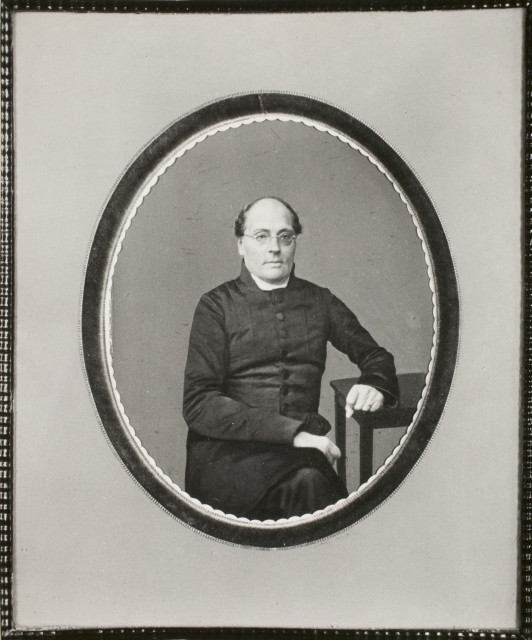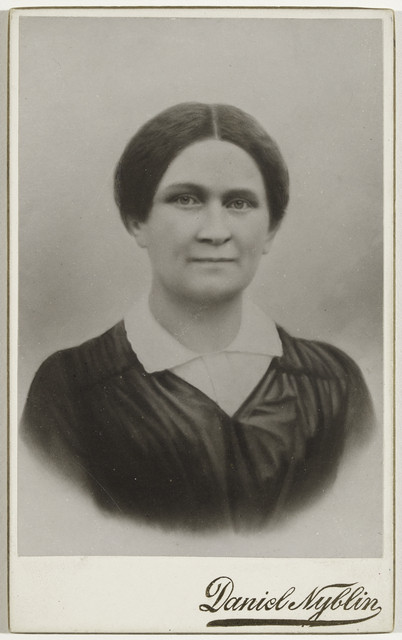Runeberg’s Day is on February 5th. In this blog post, we tell you who he was, and why he has his own day. We also tell you why you should also know his wife Fredrika Runeberg. And no, it’s not just for the Runeberg’s Day pastries. (For some odd reason, we seem to have quite many commemoratory pastries…)
J. L. Runeberg
Johan Ludvig Runeberg was a poet, teacher, journalist, and professor. He was born in 1804 and he died in 1877. He came from a rather poor, but well-connected family. These connections helped him forward in his studies as a young boy and also during his university years.


Through his connections, he got a position as a private tutor in Saarijärvi and Ruovesi in the mid-1820s. Those places, people he met there, and the stories he heard had a huge influence on his thinking and later literary works. This is also when he met his future wife, Fredrika Tengström.
After his graduation, Runeberg first worked as a journalist and a teacher in Helsinki. From the late 1830s onwards, Runeberg taught Roman and Greek literature in Porvoo Gymnasium. For a time he was also the headmaster of the said school. In Porvoo, he also helped create a local newspaper Borgå Tidning, which he assisted until 1848.
During the last 13 years of his life, Runeberg was bedridden. He died on May 6, 1877.
Runeberg’s literary works
The romanticism of the 1800s affected Runeberg’s literary style. Typical topics of that style include love, nationalism, heroes, the past, adventures, and far-away lands. Descriptions of nature were particularly important.
Runeberg’s experiences as a private tutor in the Finnish countryside during his university years influenced his writing throughout his life. Other notable influences were Greek and Roman literature, his affairs with other women (particularly with Emilie Björkstén), and modern European literature.
Runeberg is most notably a poet, although he did write some plays as well. He also rewrote several church hymns and wrote 62 completely new hymns.
His most famous literary work is The Tales of Ensign Stål (Fänrik Ståhls Sägner, Vänrikki Ståhlin tarinat), which is based on the Finnish War of 1808-1809. It consists of 35 poems.
Runeberg wrote the poem Maamme (Our land, Vårt land), which is now the Finnish national anthem. The poem itself was prologue to the Tales of Ensign Ståhl.
His poems idolized the Finnish peasantry. He described them as poor, hardworking, tenacious, decent, and God-fearing. In his poems, hard work is rewarded. His poems told Finns what they are like or what they should be like.
Our National Poet
Runeberg was widely read and revered already during his lifetime. Runeberg wrote in Swedish all his life, but his works reached the Finnish speakers as well. August Alhqvist began translating Runeberg’s poetry into Finnish already in the 1840s.
He became famous in Sweden and in Russia early on in the 1830s. His works were also translated into other European languages during his lifetime.
From his 50th birthday onwards, local students in Porvoo began to celebrate his birthday on February 5th. They came to serenade him on his birthdays. When he fell ill in 1863, his health made headlines in newspapers across the country and also abroad.
His funeral in May 1877 in Porvoo was a huge event. Even the Finnish Senate participated.
Nationalist awakening of the 1800s
In order to understand why Runeberg became so important, it is necessary to understand the context in which he was writing.
In the early years of the 1800s, the Swedish-speaking intelligentsia of Finland brought the idea of nationalism to Finland. They got interested in the Finnish language and in the culture of the Finnish speaking Finns.
In 1830, students of the University of Helsinki established the so-called Lauantaiseura (the Saturday society). The purpose of the society was to promote national romanticism. They wanted to show that Finland is a nation on its own. Their purpose was to show that Finns have their own history, culture, and national character. They wanted show that Finns are separate and different from the Swedes and the Russians. Runeberg’s romanticized descriptions of Finns were instrumental in this.
Runeberg’s Day today
As we mentioned, his birthday began to be publicly celebrated already during his lifetime. By the 1860s, these celebrations became quite formalized. There were formal speeches, plays, and music.
These days larger celebrations are held in places that have a stronger connection with Runeberg. In Pietarsaari there is a whole week’s worth of celebrations during the Runebergveckan. In Porvoo, there are a series of events on that day. You can also go and visit the Runeberg museum for free on February 5 in Porvoo.
Most of us living in Finland will notice the day because of the Finnish flags are flying all over the place. Runeberg’s Day is also commemorated by the Runeberg’s pastry. It hits the stores usually already in early January. The pastry is said to be by Fredrika Runeberg, Runeberg’s wife.
Fredrika Runeberg
Fredrika Runeberg should be known for more than the Runeberg’s Day pastry attributed to her. She was one of the first Finns to write historical novels and is one of the most notable early Finnish women novelists.


In addition to novels, Fredrika also wrote short stories and worked as a journalist in her husband’s paper Helsingfors Morgonblad. In those days, women were not supposed to have public careers. Hence she published her literary works under pennames.
Fredrika also had an interest in societal issues. She wrote about women’s role in society and was one of the founders of a ladies’ association that focused on improving the education of girls and of the poor. She is also well known for her interest in gardening, especially for her interest in roses.


Get the “Your Crash Course to Finland” online course – your gateway to all things Finnish – now from our online store.
The mission of Finnwards is to help internationals thrive in their life abroad. We provide coaching, consulting, and training services that help them do just that. Check out our Services for Businesses and Organizations or our Expat Inspiration Catalog for more information! While we serve internationals and their employers all over the world, our specialty is Finland. With our help, internationals can build a uniquely Finnish life for themselves and their family. In addition to the coaching, consulting and training services, we also offer a wide selection of self-guided online courses about Finland. Contact us and let us help you or your employees succeed in their professional and private lives abroad and in Finland.
- Most common jobs for foreigners in Finland - August 29, 2024
- Skills recognition and learning at work in Finland - April 18, 2024
- It pays off to study – a glance at expected career lengths in Finland - April 4, 2024




